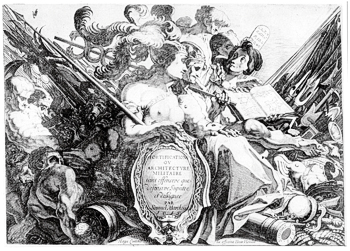Simon Frisius, Part I

Frisius career as a printmaker can be divided into two main parts. He began in France, Rouen and then Paris, where he engraved books of calligraphy. He returned to Holland, and although he engraved several calligraphy books there as well, he became much more productive as an etcher of reproductive prints in Amsterdam and The Hague. His manner of etching is elegant, and his subjects run the gamut from large panoramas of cities, landscapes, religious, historical, and mythological subjects, as well as portraits. He eventually gave up printmaking altogether in order to become a businessman.
The lively and elegant prints that bear his name were catalogued in volume VII in the Hollstein series and only partially illustrated. The New Hollstein volume on Frisius will include unsigned works that can be attributed to him, a catalogue, and full illustrations of his prints, including all of his contributions to series and books. This volume of The New Hollstein will shed new light on this once renowned etcher.
Published in 2008
Compiler: Nadine M. Orenstein
Editor: Huigen Leeflang
ISBN: 978-90-77551-65-3
262 pp.

